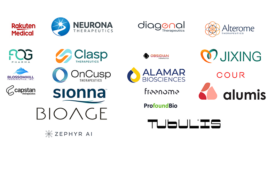
Researchers from the Beth Israel Deaconess Medical Center (BIDMC) have combined arsenic with a leukemia drug to target a master cancer regulator, a discovery that could yield new treatment options for diverse cancer types.
In the new study, the researchers discovered a previously unrecognized mechanism where arsenic trioxide (ATO) and all-trans retinoic acid cooperate (ATRA)— a vitamin A derivative—combine to destroy the enzyme Pin1—a master regulator of cancer signaling networks that activates more than 40 cancer-driving proteins and inactivates more than 20 tumor-suppressing proteins.
Pin1 was discovered more than 20 years ago.
“We and others have confirmed the ability of all-trans retinoic acid to inhibit Pin1 function in breast cancer, liver cancer, and acute myeloid leukemia, as well as in lupus and asthma; however, clinical uses of all-trans retinoic acid, especially in solid tumors, have been severely limited by its very short half-life of 45 minutes in humans,” Kun Ping Lu, MD, PhD, an investigator at the Cancer Research Institute at BIDMC, said in a statement.
Despite being better known as a poison, arsenic is one of the world’s oldest drugs, and has been used to treat a variety of ailments, ranging from infection to cancer. In the nineteenth century, arsenic served as an anti-leukemic remedy until its replacement by radiation and chemotherapy in the early twentieth century. In 1970s, the use of arsenic to treat cancer resurfaced with the discovery of the arsenic-rich traditional Chinese medicine called “Ai-Ling #1” for treating acute promyelocytic leukemia (APL) and other cancers. ATO was identified as the active component of Ai-Ling #1 and it was approved by the FDA for APL treatment in 1995.
Studies have shown that although drinking water contamination with low arsenic trioxide levels might increase cancer risk, high level arsenic trioxide drinking water contamination markedly reduces overall breast cancer mortality in the large affected population by over 50 percent during a 15-year contaminating period and in women under 60 by 70 percent. However, the mechanisms behind these anticancer effects were not previously clear. According to researchers, ATO, when combined with ATRA, has transformed APL from being highly fatal to highly curable, with minimal toxicity even in children.
In this study researchers found that is ATRA is a Pin1 inhibitor. ATRA binds, inhibits, and induces Pin1 degradation, thereby destabilizing its substrate PML-RARα and treating APL in cell and animal models and human patients
Together the two drugs effectively inhibited several cancer-driving pathways, while also eliminating cancer stem cells in cell and animal models, as well as patient-derived tumor models of triple-negative breast cancer.
“Our discovery strongly suggests an exciting new possibility of adding arsenic trioxide to existing therapies in treating triple-negative breast cancer and many other cancer types, especially when patients’ cancers are found to be Pin1-positive,” Xiao Zhen Zhou, MD, an investigator at the Cancer Research Institute at BIDMC, said in a statement. “This might significantly improve the outcomes of cancer treatment.”
All-trans retinoic acid binds and destroys the Pin1 enzyme, while also increasing cellular uptake of arsenic trioxide to increase the expression of a cell membrane protein that pumps ATO into cells.
Mice that lack expression of Pin1 are highly resistant to developing cancer even when their cells overexpress oncogenes or lack expression of tumor suppressors and display no obvious defects of more than half their lifespan, suggesting that targeting the master switch of the enzyme is a safe treatment.
Currently there are no effective Pin1 inhibitors on the market.
“It’s gratifying to see this combination of all-trans retinoic acid and arsenic trioxide that my lab discovered to be curative in the treatment of acute promyelocytic leukemia translate into possible approaches for the treatment of other cancers,” Pier Paolo Pandolfi, MD, PhD, Director of the Cancer Center and Cancer Research Institute at BIDMC, said in a statement. “Indeed, it is interesting to speculate that this combination may even prove curative in other tumor types yet to be discovered.”
The study was published in Nature Communications.
Filed Under: Oncology



